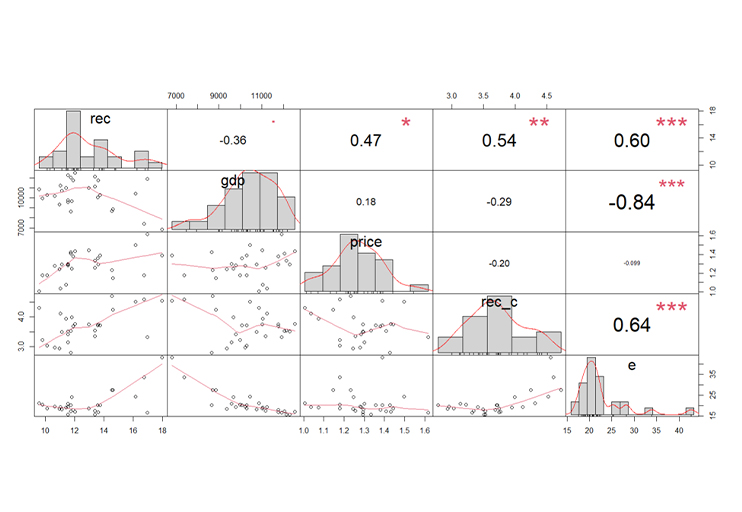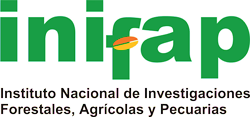Determinants of the competitiveness of Mexican export tomatoes
DOI:
https://doi.org/10.29312/remexca.v16i6.3810Keywords:
comparative advantage, exports, multiple linear model, time seriesAbstract
Mexico is one of the largest producers and exporters of tomatoes, among other products; the dominant role of this Mexican horticultural product in the international market is due to its competitiveness. The research aimed to analyze the behavior of the competitiveness of the Mexican tomato and identify the main factors that establish the fluctuations in the 1994-2021 period based on a standardized linear regression model. The findings of the research suggest that Mexico has a relative advantage in tomato production and is superior to its closest competitors: Spain and the Netherlands, although with different fluctuations over time. It has presented significant falls in the periods of Mexico’s trade liberalization and the 2007-2008 financial crisis; it is from 2016 when a period of ascent begins, with rates of 4.1% per year. Regarding the determinants of competitiveness, the most important are international unit prices and the carry-over effect of its competitors; a change of one standard deviation, ceteris paribus, was reflected in changes in its export performance ratio of 0.6846 and 0.821, respectively.
Downloads
References
Abdullahi, N. M.; Zhang, Q.; Shahriar, S.; Kea, S. and Huo, X. 2021. Relative export competitiveness of the nigerian cocoa industry. Competitiveness review: an International Business Journal. 32(6):1025-1046. Doi:10.1108/CR-03-2021-0036.
Balassa, B. 1965. Trade liberalization and ‘revealed’ comparative advantage. The Manchester School. 33(2):99-123.
Banco Mundial. 2023. GDP per cápita. https://data.worldbank.org/indicator/NY.GDP.PCAP.CD?locations=MX.
Bierut, B. K. and Kuziemska-Pawlak, K. 2017. Competitiveness and export performance of cee countries. Eastern European Economics. 55(6):522-542. Doi:10.1080/00128775.2017.1382378.
CABC. 2013. Acuerdo de suspensión antidumping al tomate mexicano: guía para exportadores.http://www.cabc.org.mx/docs/preguntasfrecuentes-dumping-guia%20rapida. 1-2 pp.
FAOSTAT. 2023. Estadísticas de cultivos y productos de la ganadería. https://www.fao.org/faostat/es/#data/QCL.
Fetscherin, M.; Alon, I. and Johnson, J. 2010. Assessing the export competitiveness of Chinese industries. Asian Bus Manage. 9(1):401-424. Doi:10.1057/abm.2010.13.
Hapsari, T. T. and Yuniasih, A. F. 2020. The determinant factors of Indonesian competitiveness of cocoa exports. Jurnal Ekonomi Pembangunan. 18(1):75-84. Doi:10.29259/jep.v18i1.9978.
Huo, D.; Yan, C.; Ken, H.; Zening, S.; Jialin, G. and An, J. 2019. Diamond model and the export competitiveness of the agriculture industry from emerging markets: an exploratory vision based on a spatial effect study using a genetic algorithm. Economic Research-Ekonomska Istraživanja. 33(1):2427-2443. doi:10.1080/1331677X.2019.1679212.
Kumar, N. R.; Rai, A. B. and Rai, M. 2008. Export of cucumber and gherkin from india: performance, destinations, competitive and determinants. Agricultural Economics Research Review. 21(1):130-138.
Montaño, I. E.; Valenzuela, I. N. y Villavicencio, K. V. 2021. Competitividad del tomate rojo de México en el mercado internacional: análisis 2003-2017. Revista Mexicana de Ciencias Agrícolas. 12(7):1185-1197.
Mwansakilwa, C.; Tembo, G. and Mugisha, J. 2013. Growth and competitiveness of non traditional agricultural exports in Zambia. Modern Economy. 04(11):794-808. Doi:10.4236/me.2013.411085.
Nwachukwu, I. N.; Nnanna, A.; Jude, N. and Imonikhe, G. 2010. Competitiveness and determinants of cocoa export from Nigeria. Report and Opinion. 2(7):51-54.
Osuntogun, A.; Edorodu, C. and Oramah, B.1997. Potentials for diversifying nigeria’s non oil exports to non traditional markets. AERC research paper. African Economic Research Consortium, Nairobi, Kenya. 68(1):1-35.
Pratiwi, I. E. 2021. The predictors of Indonesia’s palm oil export competitiveness: a gravity model approach. Journal of International Studies. 14(3):250-262. Doi:10.14254/2071-8330.2021/14-3/16.
SAGARPA. 2017. Secretaría de Agricultura, Ganadería, Desarrollo Rural, Pesca y Alimentación. Planeación agrícola nacional 2017-2030: Jitomate mexicano. Ciudad de México, México. Sagarpa, Primera edición. 1-20 pp. https://www.gob.mx/cms/uploads/attachment/file/257077/Potencial-Jitomate.pdf.
SE. 2019. Secretaría de Economía. Reporte T-MEC: se logra acuerdo de suspensión sobre tomate fresco 2019-2024. 1-3 pp. https://mipymes.economia.gob.mx/wp-content/uploads/2020/06/Reporte-TMEC-n12-esp-20190826-.pdf.
SIE. 2024. Tipo de cambio pesos por dólar EUA. https://www.banxico.org.mx/SieInternet/consultarDirectorioInternetAction.do?sector=6&accion=consultarDirectorioCuadros&locale=es.
Serin, V. and Civan, A. 2008 Revealed comparative advantage and com-petitiveness: a case study and turkey towards the EU. Journal of Economic and Social Research. 10(2):25-41.
Siegel, A. and Wagner, M. 2022. Multiple regression. Elsevier Inc. Practical Business Statistics 8th Ed. 371-394 pp. Doi:10.1016/C2019-0-00330-5.
Soto, H. D. 2018. Análisis de la competitividad del tomate mexicano en el contexto del TLCAN: escenario ante el mercado chino. Rev. Econ. Admin. 15(1):15-31.
Tandra, H.; Suroso, A. I.; Syaukat, Y. and Najib, M. 2022. The determinants of competitiveness in global palm oil trade. Economies. 10(6):132-142. MDPI AG. Doi:10.3390/economies10060132.
US. Bureau of Labor Statistics. 2023. Consumer price index for all urban consumers: all items in US. City Average. https://fred.stlouisfed.org/series/CPIAUCSL.
Vollrath, T. L. 1991. A theoretical evaluation of alternative trade intensity measures of revealed comparative advantage. Weltwirtschaftliches Archiv. 127(2):265-280.

Published
How to Cite
Issue
Section
License
Copyright (c) 2025 Revista Mexicana de Ciencias Agrícolas

This work is licensed under a Creative Commons Attribution-NonCommercial 4.0 International License.
The authors who publish in Revista Mexicana de Ciencias Agrícolas accept the following conditions:
In accordance with copyright laws, Revista Mexicana de Ciencias Agrícolas recognizes and respects the authors’ moral right and ownership of property rights which will be transferred to the journal for dissemination in open access. Invariably, all the authors have to sign a letter of transfer of property rights and of originality of the article to Instituto Nacional de Investigaciones Forestales, Agrícolas y Pecuarias (INIFAP) [National Institute of Forestry, Agricultural and Livestock Research]. The author(s) must pay a fee for the reception of articles before proceeding to editorial review.
All the texts published by Revista Mexicana de Ciencias Agrícolas —with no exception— are distributed under a Creative Commons License Attribution-NonCommercial 4.0 International (CC BY-NC 4.0), which allows third parties to use the publication as long as the work’s authorship and its first publication in this journal are mentioned.
The author(s) can enter into independent and additional contractual agreements for the nonexclusive distribution of the version of the article published in Revista Mexicana de Ciencias Agrícolas (for example include it into an institutional repository or publish it in a book) as long as it is clearly and explicitly indicated that the work was published for the first time in Revista Mexicana de Ciencias Agrícolas.
For all the above, the authors shall send the Letter-transfer of Property Rights for the first publication duly filled in and signed by the author(s). This form must be sent as a PDF file to: revista_atm@yahoo.com.mx; cienciasagricola@inifap.gob.mx; remexca2017@gmail.
This work is licensed under a Creative Commons Attribution-Noncommercial 4.0 International license.


